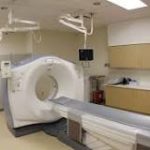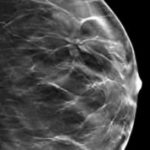 Breast cancer is the most common type of cancer in women and the second leading cause of death by cancer only second to lung cancer. On the average, if you are female, you have a 12% – 13% risk of developing breast cancer in your lifetime.
Breast cancer is the most common type of cancer in women and the second leading cause of death by cancer only second to lung cancer. On the average, if you are female, you have a 12% – 13% risk of developing breast cancer in your lifetime.
Risk Factors
Chest X-rays and chest CT scans especially below the age of 30 puts you at risk.
 X-rays use ionizing radiation that is capable of causing damage to our DNA and cells which can turn them into cancerous cells. Since the CT scan is a composite of many X-rays at once, the risk is even higher.
X-rays use ionizing radiation that is capable of causing damage to our DNA and cells which can turn them into cancerous cells. Since the CT scan is a composite of many X-rays at once, the risk is even higher.
However, a single shot of these tests has not been shown to cause a significant risk of cancer. The same cannot be said for people moving from place to place requesting CT scans and x-rays frequently.
When your doctor requests you to have a CT scan or an X-ray, he/she would have weighed the risk and benefit and would have concluded that the benefit outweighs the risk.
The Controversy about the use of mammography.
Mammography is an efficient way of screening for breast cancer in women 40 years and above. It is also recommended for younger women if there is a case of breast cancer in a close family member. In such a scenario, the recommended age for you to start regular mammogram screening would be ‘age your relative was diagnosed minus 10 years)

However, since mammography uses radiation, too frequent mammograms may paradoxically increase your chance of developing a breast cancer. Avoid unnecessary breast irradiation.
It is recommended that you get a mammogram done every 1-2 years. Some have argued 2-3 years.
An alternative to mammography is the ultrasound scan. This is without the risk of ionizing radiation. It is however usually recommended in people with breasts that have a high density in which case the mammography does not penetrate well. Ultrasound is not routinely used probably because of cost.
The risk of breast cancer is also higher in women with a high breast density.
I am aware that 40 is the new 30 and many people now opt to have children much later in life. Well, not having children or having them when you are ‘older’ might increase your risk of developing breast cancer.
So does the use of estrogen either as birth control pills or as hormone replacement therapy in women who are post-menopausal.

Avoid high-fat diet, exercise regularly and reduce alcohol consumption these simple things will reduce your risk of developing breast cancer.
Grey Areas
You could go for genetic screening to assess your risk of developing breast cancer however there is inconclusive evidence that it is of benefit.
Clinical breast examination alone to screen for breast cancer isn’t enough. Breast lumps less than 10mm are likely to be missed by the doctor’s hands.

Routine breast self-examination used to be recommended but not anymore. It has been found to increase the rate of false alarms and has not led to a decrease in deaths from breast cancer.
Finally, if you have a sibling/parent especially male relative with breast cancer, you might want to check for the BRCA genes. If you test positive for these genes, just like Angelina Jolie, removing your breasts and/or ovaries before developing cancer could reduce your risks by as much as 80%.
Be proactive, best of luck.